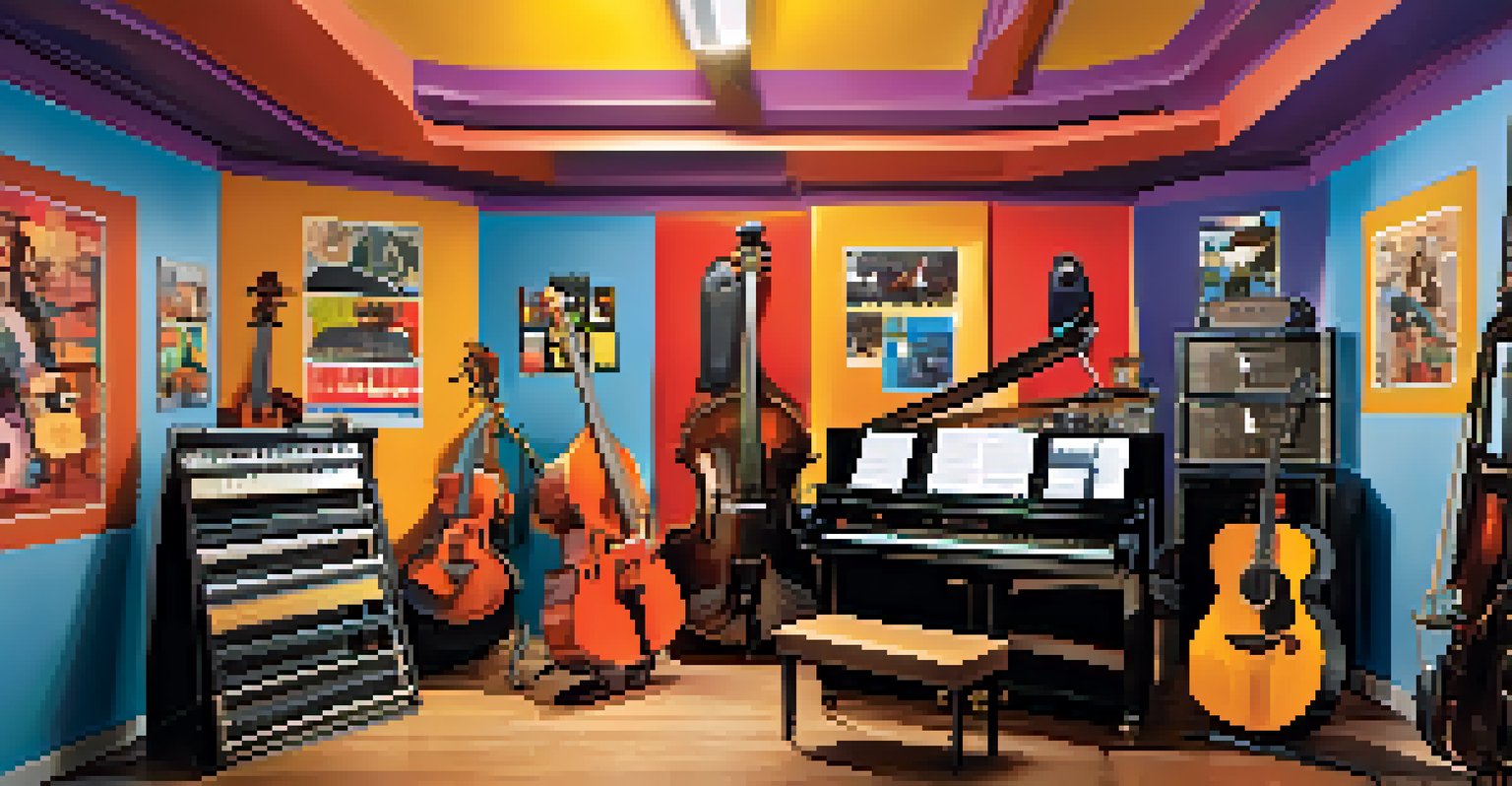Practicing Scales: Essential Techniques for All Instruments

Understanding the Importance of Scales in Music
Scales are the building blocks of music, providing a framework for melodies and harmonies. Practicing scales helps musicians develop their technical skills, improve their ear, and increase their overall musicality. Just as athletes train their bodies with foundational exercises, musicians use scales to strengthen their instrument proficiency.
Music is the shorthand of emotion.
When you practice scales, you're not just playing a sequence of notes; you're training your fingers, your breath control, or even your embouchure, depending on your instrument. This foundational practice allows for greater expression and creativity when playing more complex pieces. Think of scales as the gym workouts for musicians, where the more you train, the stronger your performance becomes.
Moreover, scales are universal across all instruments, making them an essential technique for every musician. Whether you're strumming a guitar, blowing into a saxophone, or pressing piano keys, scales are a language that all musicians understand. By mastering this language, you open doors to improvisation and composition, enriching your musical journey.
Types of Scales: Major, Minor, and Beyond
There are various types of scales, but the most common ones are major and minor scales. Major scales have a happy and bright sound, while minor scales often evoke a more somber or emotional tone. Understanding these scales is crucial for playing a wide range of music genres, from classical to jazz.

Beyond major and minor, there are other scales like pentatonic and blues scales that are particularly useful for improvisation. The pentatonic scale, for example, is a five-note scale that works beautifully in many musical styles, especially in folk and rock music. By familiarizing yourself with different types of scales, you can expand your musical vocabulary and expressiveness.
Scales Build Musical Foundation
Practicing scales strengthens musicians' technical skills and enhances their overall musicality.
Experimenting with these various scales can also lead to unexpected discoveries in your playing. Just as a painter has a palette of colors to choose from, musicians have a collection of scales to create their unique sound. This exploration not only enhances your skills but also keeps your practice sessions fresh and exciting.
Effective Practice Techniques for Scales
To make the most of your scale practice, it's important to establish a structured routine. Dedicate specific time slots during your practice sessions to focus solely on scales, ensuring you're not rushing through them. Consistency is key; even short daily sessions can lead to significant improvements over time.
The music is not in the notes, but in the silence between.
One effective technique is to use a metronome to help with timing and rhythm. Start slowly, focusing on accuracy, and gradually increase the tempo as you become more comfortable. This method not only enhances your technical precision but also builds your confidence when playing in time with other musicians.
Additionally, try incorporating various articulations and dynamics into your scale practice. For instance, practice legato for smooth connections between notes, or staccato for a more detached sound. By varying your approach, you keep your practice engaging and develop a deeper understanding of how scales can sound in different musical contexts.
Integrating Scales into Your Repertoire
Once you've become comfortable with scales, the next step is to integrate them into your repertoire. This means applying scale patterns and concepts to the pieces you are learning or composing. By doing this, you not only reinforce your scale practice but also enhance your overall musicianship.
For example, when you encounter a passage in a song that resembles a scale pattern, take the time to analyze it. Identify the scale being used and practice it separately before playing it in context. This approach helps you internalize the music and improves your ability to navigate similar passages in the future.
Variety of Scales Expands Creativity
Familiarizing yourself with different types of scales enriches your musical vocabulary and encourages creative expression.
By blending scale work with your repertoire, you create a holistic approach to practice. It allows you to see the practical application of what you've learned, making your practice sessions more meaningful. Plus, you'll find that your ability to improvise and create music will flourish as you start to recognize scale patterns in the pieces you love.
Using Technology to Enhance Scale Practice
In today’s digital age, technology can be a great ally in your scale practice. There are numerous apps and software available that provide interactive tools for practicing scales. From virtual metronomes to scale generators that show you which notes to play, these resources can make your practice sessions more dynamic and fun.
Some apps even offer backing tracks, allowing you to play scales in a musical context. This not only helps with timing but also makes practicing scales feel less monotonous. Imagine playing your scales along with a funky jazz band or a soothing piano accompaniment; it’s an engaging way to enhance your skills.
Moreover, recording your practice can provide valuable insights into your progress. Listening back to your recordings helps you identify areas that need improvement, whether it’s timing, intonation, or dynamics. Embracing technology in your practice routine can lead to more efficient and enjoyable learning experiences.
The Role of Scales in Improvisation
Scales play a crucial role in improvisation, serving as the foundation for spontaneous musical expression. When you’re comfortable with various scales, you can move freely and creatively over chord changes in a piece. Think of scales as a map, guiding you through the vast landscape of musical possibilities.
For instance, knowing your pentatonic scale can empower you to improvise over blues music with confidence. As you explore these scales, you’ll begin to recognize patterns and intervals that resonate with your musical intuition. This familiarity allows you to express your emotions more authentically through your instrument.
Setting Goals Enhances Practice
Establishing specific, measurable goals for scale practice provides direction and a sense of accomplishment.
Practicing improvisation with scales can be a liberating experience. It encourages you to take risks and experiment with your sound. Moreover, it helps to reinforce your technical skills while allowing you to develop your unique musical voice, ultimately making you a more versatile musician.
Setting Goals for Scale Practice
Setting specific goals for your scale practice can greatly enhance your progress. Rather than simply aiming to 'practice scales,' try to establish clear, measurable objectives. For example, you might set a goal to master a particular scale in three different octaves or to play it at varying tempos throughout the week.
Having these goals not only provides direction but also gives you a sense of accomplishment as you achieve them. It’s like climbing a mountain; each goal reached is a step closer to the summit of your musical abilities. Plus, tracking your progress can keep you motivated during your practice sessions.

Remember to be flexible with your goals as well. As you advance, your focus may shift, and that’s perfectly okay. Adapting your goals ensures that your practice remains relevant to your growth as a musician, making your journey both fulfilling and enjoyable.